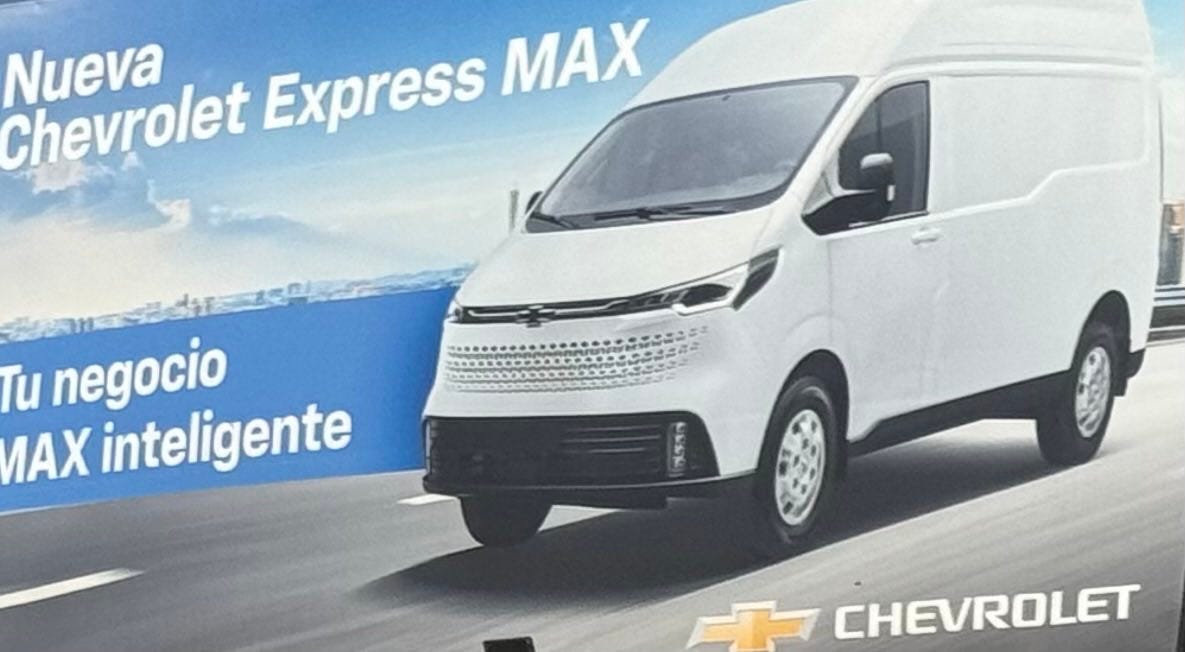How GM Led A Parade of Chinese Automakers Into Mexico
A Hasty Fix Comes Back to Haunt
I was in Mexico City again last week. Chinese cars are pouring into the market faster than you can say señorita.
Imports from China shot up to 485,302 units in 2024 – almost one-third of all new car sales.
You see advertisements for Chinese cars as soon as you step off the plane. And you see new dealerships for Chinese carmakers popping up across the capital city.
The speed of change is breathtaking.
What makes this story doubly dramatic, however, is the role that General Motors played in accelerating China’s drive into Mexico.
America’s General Motors? Yes, that GM.
Here’s the background: In 2020, GM executives in China found themselves under enormous pressure. Sales of the Chevy brand in China were in a free fall, down 63% from their peak. GM and its joint venture partner SAIC were suddenly saddled with massive excess capacity - and red ink.
Chinese executives at SAIC quickly came up with a solution. “Why don’t we export Chevys to Mexico!” This would be a dramatic change. The SAIC-GM 50-50 joint venture – since its inception in 1997 – was always designed to produce in China for the China market only.
To allay concerns, Chinese executives painted a pretty picture. SAIC would handle the hard work of manufacturing. All GM needed to do was tack on the Chevy brand, put the cars on boats and have Chevy dealers in Mexico deliver the cars.
Made-in-China Chevy sales started fast and rocketed higher each year, reaching 146,000 in 2024. That was a massive 71% of all Chevys delivered in Mexico last year.
The money guys at GM saw the deal as an elegant solution - almost genius. “We are making incredible profits exporting from our China JV to Mexico,” an exuberant GM executive recently told me.
Come on, GM people! By now, you must understand that the Chinese business person never does something for nothing. The deal instantly handed half the revenues and half the profits of every Chevy export to SAIC.
More importantly, the arrangement gifted SAIC direct access to a key new overseas market. SAIC understood that as Mexican customers discovered that they were buying a Chinese product with a Chevy badge, they would become more open to trying other Chinese cars.
So, can you guess what was the best-selling Chinese car brand in Mexico for the past three years? That’s right: MG. And who owns the MG brand? It’s SAIC, GM’s China partner.
MG, which offers 11 different models, sold 61,000 vehicles in Mexico last year. Number two BYD delivered 42,000 and expects to sell 80,000 this year.
An executive from a tech supplier in Mexico predicts doom around the corner. “That China Chevy deal,” he told me, “put GM in Mexico on a rapid path to becoming totally irrelevant.”
There are now 21 Chinese brands with more than 300 different models on offer in Mexico. Will they ever go back?
“It’s too late. The Chinese are already here with good products and incredible prices,” said every Chinese brand dealer when I asked whether U.S. pressure could force Mexico to turn the Chinese away.
Of course, President Trump could wake up tomorrow and demand that Mexico match America’s 100% tariffs on Chinese car imports. Who knows?
But, for now at least, the action continues to go China’s way. Ford and Stellantis just adopted GM’s playbook: China partner builds, Detroit badges and Mexico buys.
Detroit continues to plant the seeds of its own destruction. The Chinese are smiling at their good fortune - and the naivety of their American partners.
Or is it something darker: Detroit selling out Detroit?







MG is doing very well in Australia, too. And badged as MGs.
Really enjoyed this, thank you Michael, I was sharing this a few days ago;
“.. A billion people innovating as fast as they can in one of the most technologically advanced societies on earth, all with relatively brand new infrastructure, consistently pulling in an agreed common direction > “ https://youtu.be/Xuv87xMDBho?si=J5s64A5gJ_lhVAHL